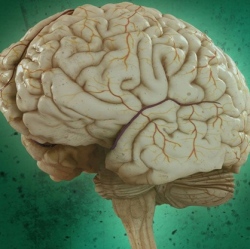
Scientists have created an unprecedented high-resolution map of the brain that reveals structures as small as those found in individual nerve cells. They produced the 3D map from a compilation of images taken with nanoscale resolution, making it possible to pick out features measured in millionths of a millimetre.
Researchers plan to use the tool to study the abnormal connections between brain cells that underlie debilitating neurological disorders such as schizophrenia and depression. “We’re talking about imaging close to the level of a molecule,” said Narayanan Kasthuri, a neurobiologist at Harvard University, who led the team behind the map.
Kasthuri and colleague Jeff Lichtman’s team built a system that automatically slices a subject brain into thousands of thin sections. After staining the slices to pick out different tissues, an electron microscope was trained to take a pictures of each slice. A computer then assigns different colours to individual structures and knits the images together to produce a 3D map.
The scientists demonstrated the power of the system by imaging the area of a mouse brain responsible for sensory perception. The results are published in the journal Cell.
Traditional brain imaging techniques, such as MRI, are straightforward to use, but can only resolve features down to about a millimetre. A German anatomical atlas called “BigBrain”, resolves features of the human brain down to micrometres, thinner than a human hair – and almost on a scale of individual cells.
By contrast, Kasthuri’s tool produces nanoscale images of individual brain cells, their contents and their connections. “One pixel on an MRI equals about a billion pixels in our images,” he said.
